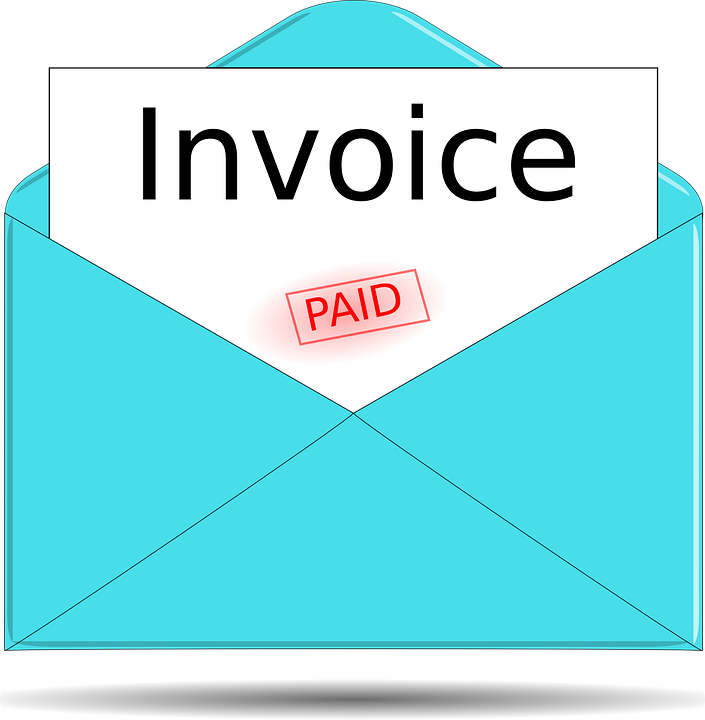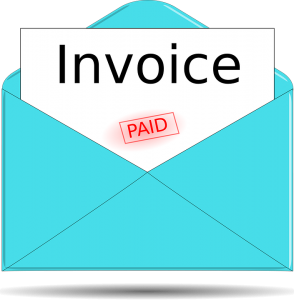
How to Use Advanced Reporting in Quickbooks
 Advanced Reporting is a native feature in Quickbooks Enterprise. If you use this premium version of Intuit’s popular accounting software, you can take advantage of Advanced Reporting. It’s included as a native feature in Quickbooks Enterprise. Before using Advanced Reporting, though, there are a few things you should know.
Advanced Reporting is a native feature in Quickbooks Enterprise. If you use this premium version of Intuit’s popular accounting software, you can take advantage of Advanced Reporting. It’s included as a native feature in Quickbooks Enterprise. Before using Advanced Reporting, though, there are a few things you should know.
What Is Advanced Reporting?
In case this is your first time hearing about it, you might be wondering what Advanced Reporting is exactly. Basically, it’s an optional feature that allows you to customize your reports. With Advanced Reporting, you can create custom reports that specifically include — or exclude — data. You will still be able to run traditional reports that follow Quickbooks’s predefined format. Advanced Reporting is simply an optional feature that gives you the freedom to run and create custom reports as well.
Steps to Using Advanced Reporting
Assuming you have an active subscription to Quickbooks Enterprise, you can use Advanced Reporting. First, however, you’ll need to enable this feature. Advanced Reporting is disabled by default. To enable it, you’ll have to contact the Quickbooks Desktop support center. When requested, they will enable Advanced Reporting in your account.
Once enabled, Advanced Reporting will allow you to customize the data in your reports. You can still run reports. Rather than using the standard formats, though, you can customize the data of these reports. The Quickbooks Library offers a plethora of customization tools, some of which include tables, charts, text and utilities. To customize a report, go to the Quickbooks Library and choose one of these tools.
Right-clicking on any data section of a report will allow you to customize it. Simply right-click the area that you want to customize and choose “Properties.” Quickbooks will then reveal information about how to customize it. You can choose the “Dimensions” tab to add groups or totals to the report. Alternatively, you can select “Expressions” to add a column to the report. When adding a column to the report, Quickbooks will reveal options for customizing tables and fields.
Quickbooks Enterprise offers more features than some of the lower-tiered versions of Intuit’s popular accounting system. Advanced Reporting is one such feature that’s included in Quickbooks Enterprise. It’s designed to help you create advanced reports. With Advanced Reporting, you can customize the data of your reports.
Did this tutorial work for you? Let us know in the comments section below!

How to Resolve Missing Transactions in a P&L Report
 Profit and loss (P&L) reports make it easy to analyze your business’s revenues and expenses. Available to view in Quickbooks, they consist of all recorded financial transactions for a given period. You can run a P&L report to see how much money your business earned and how much money your business spent during a given period. When running a P&L report, though, there’s a chance that one or more transactions will be missing from it. How do you resolve missing transactions in a P&L report exactly?
Profit and loss (P&L) reports make it easy to analyze your business’s revenues and expenses. Available to view in Quickbooks, they consist of all recorded financial transactions for a given period. You can run a P&L report to see how much money your business earned and how much money your business spent during a given period. When running a P&L report, though, there’s a chance that one or more transactions will be missing from it. How do you resolve missing transactions in a P&L report exactly?
Check Accounts Receivable and Bank Accounts
If you’re missing one or more transactions in a P&L report, you should check your accounts receivable and bank accounts. While most transactions should appear automatically in the P&L report — assuming they occurred during that time — this doesn’t apply to all transactions. Customer payments, for example, may only appear in your accounts receivable or bank account. Quickbooks won’t display them in P&L reports.
Look for Bill Payments
Another type of transaction that may not appear in a P&L report is bill payments. Bill payments are expenses that involve your business paying a service provider. Common types of bill payments include utilities, internet service, marketing services and more. When you come across a missing transaction in a P&L report, you should consider whether or not it’s a bill payment. Bill payments will only appear in your accounts payable or bank account. Like with customer payments, Quickbooks won’t display them in P&L reports.
Consider Deposits
You should consider whether or not a transaction is a deposit if it’s missing from a P&L report. Deposits will only appear in a P&L report if they are linked to an income account. If there’s a transaction that’s not linked to an income account, Quickbooks won’t display it in P&L reports. Of course, you can avoid this headache by using Quickbooks’ invoice and payments system. The invoice and payments system will automatically record deposits appropriately.
It’s frustrating when you run a P&L report, only to discover that it’s missing a transaction. Maybe the transaction is a customer payment, or perhaps it’s a bill payment. Regardless, you should take the time to resolve the missing transaction so that it doesn’t throw off your business’s financial records.
Did this tutorial work for you? Let us know in the comments section below!

How to Create Performance Charts in Quickbooks
 Want to track your business’s performance? Quickbooks offers more than just traditional accounting reports; it offers performance reports. Known as performance charts, they can reveal key information about your business’s performance. Performance charts are available in several versions of Quickbooks Online, including the Advanced version and Accountant version. If you have one of these versions, you can create performance charts in one of two ways.
Want to track your business’s performance? Quickbooks offers more than just traditional accounting reports; it offers performance reports. Known as performance charts, they can reveal key information about your business’s performance. Performance charts are available in several versions of Quickbooks Online, including the Advanced version and Accountant version. If you have one of these versions, you can create performance charts in one of two ways.
Option #1) Quick Charts
The easiest way to create performance charts is to use the “quick charts” method. Start by logging in to your Quickbooks account and selecting the “Reports” menu. You should now see a tab labeled “Performance center.” Clicking this tab will reveal the option to create a new chart. Just select the “Quick add charts” option displayed in the dashboard.
When you create a performance chart using this method, you can specify a time period. Only data within your specified time period will be applied to the chart. You can also apply filters and even group the performance data by one or more categories.
Option #2) Custom Charts
Another option is to create custom charts. Custom charts, as the name suggests, offer a higher level of customization. Custom charts give you complete control over the data. They take a little more time to create than quick charts, but many businesses prefer them because of their customizable properties.
To create a custom chart, click the “+Add new chart” option from the available list. You must then choose from one of the available metrics. There are about a dozen metrics that Quickbooks can track for use in charts, some of which include expenses, revenue, gross profits, net profits, cash flow, current ratio, quick ratio, cost of goods sold, accounts receivable and accounts payable. For each custom chart that you create, you’ll need to choose a single metric to track.
After choosing a metric to track, you’ll have to enter a name for your custom chart. You can give the chart any name, but you should consider using a descriptive and memorable name. You must then select your preferred chart type, such as vertical bar, pie chart or trend line. For the “Time period” menu, select the time period for which you want the chart to display data. Upon entering all of the required information, select the option “Add to dashboard” to create your custom chart.
Did this tutorial work for you? Let us know in the comments section below!

How to Import a Modified Accountant’s Copy Into Quickbooks
 Quickbooks makes it easy to collaborate with a professional accountant when managing your business’s finances. Rather than simply providing an accountant with access to your business’s Quickbooks account, you can create a separate version for him or her. Known as an Accountant’s Copy, it will allow the accountant to credit new records and edit existing records — all without logging in to your own business’s own account. After making a change to the Accountant’s Copy, though, the accountant must import it.
Quickbooks makes it easy to collaborate with a professional accountant when managing your business’s finances. Rather than simply providing an accountant with access to your business’s Quickbooks account, you can create a separate version for him or her. Known as an Accountant’s Copy, it will allow the accountant to credit new records and edit existing records — all without logging in to your own business’s own account. After making a change to the Accountant’s Copy, though, the accountant must import it.
What Is Importing?
Importing is the process of updating your business’s Quickbooks account with a modified Accountant’s Copy. When an Accountant’s Copy is originally produced, it will feature the same data as your business’s Quickbooks account. Accountants, of course, will typically modify these copies when adding new records and editing existing records. For these changes to show up in your business’s Quickbooks account, the accountant must import the modified Accountant’s Copy. Importing will update your business’s Quickbooks account with the appropriate changes.
Steps to Importing a Modified Accountant’s Copy
Importing a modified Accountant’s Copy is a breeze. The first step is to create a backup copy of your business’s original company file. You probably won’t need to use it. If something goes wrong, though, a backup copy will allow you to revert the changes. Depending on which version of Quickbooks you use, you may need to adjust the settings. In Quickbooks Desktop Enterprise, for example, you’ll have to disable the Advanced Inventory feature in order to import a modified Accountant’s Copy.
You can now proceed to import the modified Accountant’s Copy. This is done by going to the Quickbooks home screen and selecting “File,” followed by “Send Company File.” From the available options, choose “Accountant’s Copy” and “Client Activities.” While logged in to your business’s Quickbooks account, select the option labeled “Import Accountant Changes From File.” Quickbooks will then import the Accountant’s Copy, meaning all of the changes will be reflected in your business’s Quickbooks account.
It’s a good idea to test your business’s Quickbooks account after importing the modified Accountant’s Copy. Importing will typically cause data to shuffle around. You may lose some data and gain new data. Therefore, there’s always the risk of something will go wrong. Testing your business’s Quickbooks account will give you peace of mind knowing that the import worked correctly.
Did this tutorial work for you? Let us know in the comments section below!

How to Use the Rebuild Data Tool in Quickbooks
 Is your Quickbooks company file corrupt? File corruption is a common problem. It occurs when data becomes damaged. Being that all of your business’s financial transactions are stored in the company file, you’ll need to protect it from corruption. Fortunately, Quickbooks offers a tool for fixing problems with your company file. Known as the rebuild data tool, it can restore your company file back to working order so that it’s no longer corrupt. How do you use the rebuild data exactly?
Is your Quickbooks company file corrupt? File corruption is a common problem. It occurs when data becomes damaged. Being that all of your business’s financial transactions are stored in the company file, you’ll need to protect it from corruption. Fortunately, Quickbooks offers a tool for fixing problems with your company file. Known as the rebuild data tool, it can restore your company file back to working order so that it’s no longer corrupt. How do you use the rebuild data exactly?
Steps to Using the Rebuild Data Tool
In Quickbooks Desktop, you can use the rebuild data by clicking the “File” menu on the home screen, followed by “Utilities” and then “Rebuild Data.” You will then be prompted to create a backup of your company file. Creating a backup is important because it ensures that if something goes wrong, you can revert the changes to restore your original company file. After creating a backup of your company file, Quickbooks will begin to repair your original company file.
Keep in mind that the rebuild data tool can take a while to complete the repair process. Depending on the size of your company file, it may take anywhere from five to 15 minutes — sometimes even longer. Once complete, you should see a message indicating that the rebuild data tool has finished repairing your company file. You can then select “OK” to complete the process.
Verify Your Company File
It’s recommended that you verify your company file after using the rebuild data tool on it. Verification is designed to check the data within your company file for errors. If the rebuild data didn’t work, verification will reveal it.
You can verify your company file by going back to the “File” menu on the home screen and selecting “Utilities,” followed by “Verify Data.” This alternative Quickbooks tool will then verify your newly rebuilt company file. Assuming no problems are discovered by the tool, you can click “OK” when it finishes. If the tool does find one or more errors, you should try rebuilding it again. Rebuilding your company file for a second time can often fix errors.
In Conclusion
Your company file is essential for accounting. It contains all income and revenue transactions that your business has performed as well as the accounts with which it performed them. If there’s a problem with your company file, you can use the rebuild data tool. Just remember to follow up by using the verification tool shortly thereafter.
Did this tutorial work for you? Let us know in the comments section below!

How to Create a Sales Order in Quickbooks
 Quickbooks Desktop supports a variety of different orders, including sales orders. Sales orders, in fact, are an integral component of the software’s accounts receivables workflow. If you allow customers to pay after their products have been delivered or their services have been completed, you may want to use sales orders. What are sales orders exactly, and how do you create them in Quickbooks?
Quickbooks Desktop supports a variety of different orders, including sales orders. Sales orders, in fact, are an integral component of the software’s accounts receivables workflow. If you allow customers to pay after their products have been delivered or their services have been completed, you may want to use sales orders. What are sales orders exactly, and how do you create them in Quickbooks?
What Is Sales Order?
A sales order is an accounting record that connects an order to a customer and an invoice. This feature is available in both the Premier and Enterprise versions of Quickbooks Desktop. Sales orders are used to track products and services that customers have purchased but haven’t received. Not all businesses need to use them. Rather, only businesses with accounts receivables will typically benefit from the use of sales orders.
How to Enable Sales Orders
Before you can create a sales order in Quickbooks Desktop, you’ll need to enable this feature. This is done by signing in to your Quickbooks account and selecting the “Edit” menu, followed by “Preferences.” On the left-hand menu, choose “Sales & Customers,” followed by the “Company Preferences” tab. You should then see an option for “Enable Sales Order.” Clicking the box next to this option will enable sales orders in your Quickbooks account.
How to Create a Sales Order
Assuming you’ve enabled sales orders in your Quickbooks account, you can proceed to create one in just a few simple steps. While on the Quickbooks home screen, select “Sales Orders/Create Sales Orders.” Next, select the customer for whom you are creating the sales order from the “Customer: Job” menu.
You will then need to enter some information about the sales order, such as the date and sales order number. Quickbooks also allows you to add discounts to sales orders. If you want to apply a discount to the sales order, right-click anywhere in the item list and select “New.” From the “New Item” window, choose the “Type” menu, followed by “Discount.” You can then enter the amount of the discount that you wish to give the customer. After entering all other information about the sales order, you can finish the process by selecting “Save & Close.” You should now have a completed sales order that’s ready to be sent to the respective customer.
Did this tutorial work for you? Let us know in the comments section below!

How to Replace Your Accountant’s Copy in Quickbooks
 Does your business have a professional accountant who’s responsible for tracking revenue, expenses and performing other accounting activities? If so, you should consider using a Quickbooks accountant’s copy. An accountant’s copy is a packaged version of your business’s company file in Quickbooks. As the name suggests, however, it’s designed for accountants. But what if you need to replace your accountant’s copy? Maybe your current accountant’s copy is corrupted, or perhaps it contains incorrect data. Regardless, you can replace your accountant’s copy in just a few easy steps.
Does your business have a professional accountant who’s responsible for tracking revenue, expenses and performing other accounting activities? If so, you should consider using a Quickbooks accountant’s copy. An accountant’s copy is a packaged version of your business’s company file in Quickbooks. As the name suggests, however, it’s designed for accountants. But what if you need to replace your accountant’s copy? Maybe your current accountant’s copy is corrupted, or perhaps it contains incorrect data. Regardless, you can replace your accountant’s copy in just a few easy steps.
Step #1) Create a Backup
Before attempting to replace your accountant’s copy, you should create a backup. You can reverse or otherwise undo the changes when replacing your accountant’s copy. Rather, you’ll lose your original accountant’s copy while generating a new accountant’s copy in the process. Therefore, it’s a good idea to create a backup before replacing your accountant’s copy. If you happen to lose any important data, you can retrieve it from the backup.
Step #2) Access the ‘File’ Menu
After creating a backup, access the “File” menu from the home screen of Quickbooks. You should see several options under this menu. Find and click the option titled “Send Company File.” Next, select “Accountant’s copy.”
Step #3) Remove Restrictions
To replace your accountant’s copy, you’ll need to remove the restrictions from it. From the “Accountant’s copy” section, find and select “Client Activities.” You should then see an option for “Remove Restrictions.” Clicking this option will bring up a confirmation screen asking you to verify that you wish to remove restrictions from your accountant’s copy. Upon selecting “OK,” Quickbooks will delink your existing accountant’s copy to your business’s company file.
How does the removal of restrictions allow you to replace your accountant’s copy exactly? Normally, any changes made to your accountant’s copy will be reflected upon your business’s company file. If a new account is added to your accountant’s copy, for example, it will be automatically added to your business’s company file as well. Removing the restrictions from your accountant’s copy, though, breaks this link. Your old accountant’s copy will no longer be linked to your business’s company file. Instead, you’ll have a new accountant’s copy that’s linked to your businesss’ company file.
Assuming you followed the steps outlined above, you should now have a new accountant’s copy. You can send this copy to your professional accountant so that he or she can make changes to your business’s company file.
Did this tutorial work for you? Let us know in the comments section below!

How to Record a Customer Loan in Quickbooks
 Does your business offer loans to customers? While some businesses require their customers to pay for products and services upfront — or pay after the delivery of a product or the completion of a service — others offer loans as an alternative. With a loan, you can close out all of a customer’s open and unpaid invoices, followed by recording a loan for the customer. The customer will still have to repay the loan, but he or she won’t have any open invoices. How do you record a customer loan in Quickbooks exactly?
Does your business offer loans to customers? While some businesses require their customers to pay for products and services upfront — or pay after the delivery of a product or the completion of a service — others offer loans as an alternative. With a loan, you can close out all of a customer’s open and unpaid invoices, followed by recording a loan for the customer. The customer will still have to repay the loan, but he or she won’t have any open invoices. How do you record a customer loan in Quickbooks exactly?
Step #1) Access the Chart of Accounts
To get started, you’ll need to access the chart of accounts in Quickbooks. The chart of accounts, of course, is a ledger containing all of the accounts with which your business has conducted transactions. In Quickbooks Online, you can access it by clicking the gear icon on the homepage and selecting “Chart of Accounts.”
Step #2) Specify Non-Current or Other Current Assets
After pulling up the chart of accounts, you’ll need to specify whether the loan is for non-current or other current assets. Non-current assets are intended for loans that must be repaid after the end of the current fiscal year. Other current assets, on the other hand, are intended for loans that must be repaid by the end of the current fiscal year. You can choose between non-current or other current assets by clicking “New” in the chart of account, followed by “Current Assets.”
Step #3) Choose the Detail Type
There are still a few things extra you’ll need to do in order to record a customer loan in Quickbooks. You’ll need to choose the detail type, for instance. For the detail type option, select “Loans to others.” There are other options from which you can choose. Since you are trying to record a customer loan, the correct option is to choose is “Loans to others.”
Step #4) Enter a Name and Save
You can enter a name for the customer loan. Quickbooks doesn’t require you to enter any specific name. Rather, you’ll have the freedom to choose any name for the customer loan. Nonetheless, it’s recommended that you enter a descriptive and relevant name for the customer loan so that you can easily remember it. When finished, click the “Save and Close” option to finish the process. The loan will now be added to your Quickbooks account. You can then proceed to create a journal entry for the opening balance of the loan, followed by applying credits to the loan using the customer’s accounts receivable.
Did this tutorial work for you? Let us know in the comments section below!

How to Build a Progress Invoice in Quickbooks
 Are you trying to build a progress invoice? Not all businesses send their customers a single invoice consisting of the entire charge for a given product or service (or multiple products or services). Depending on the type of business you operate, you may need to send customers multiple invoices, each of which featuring different amounts. Landscaping and other service-oriented businesses, for instance, often use multiple invoices. Even some product-oriented businesses use multiple invoices. Fortunately, you can build a progress invoice in Quickbooks in just a few easy steps.
Are you trying to build a progress invoice? Not all businesses send their customers a single invoice consisting of the entire charge for a given product or service (or multiple products or services). Depending on the type of business you operate, you may need to send customers multiple invoices, each of which featuring different amounts. Landscaping and other service-oriented businesses, for instance, often use multiple invoices. Even some product-oriented businesses use multiple invoices. Fortunately, you can build a progress invoice in Quickbooks in just a few easy steps.
What Is a Progress Invoice?
A progress invoice is essentially multiple invoices that, as the name suggests, follows a progressive format. Rather than requiring customers to make the full payment upfront, you can send them a sequence of multiple small invoices. Progress invoices are often used for projects. With projects, customers may have to pay for multiple products and services. You can use a progress invoice so that customers can make partial payments towards the completion of the project.
Steps to Building a Progress Invoice in Quickbooks
To build a progress invoice in Quickbooks, you’ll need to enable this feature. This is done by logging in to your Quickbooks account, clicking the “Settings” menu and choosing “Account and settings.” Next, click the “Sales” tab. You should now see a section labeled “Progress Invoicing.” Within this section is an “Edit” button, which you can click to configure the progress invoice settings for your account. For the option labeled “Create multiple partial invoices from a single estimate,” click the adjacent box so that it places a checkmark inside of it. This will enable progress invoicing in your Quickbooks account.
With progress invoicing enabled, you can now build a template to use for your business’s progress invoices. Go back to the “Setting” menu and click “Custom form styles. Next, click “New style” and choose “Invoice. You can now build a template to use for a progress invoice. Templates for progress invoices work the same as those used for traditional invoices. They show a breakdown of the purchased products or services as well as an “amount due” field. The only difference is that progress invoices are broken up into multiple invoices so that customers can make partial payments over time. Once you’ve created a progress invoice template, you can use it as the foundation for your business’s progress invoices.
Did this tutorial work for you? Let us know in the comments section below!

How to Record an Old Check in Quickbooks
 Did you forget to record a check that your business issued to a vendor or client? Whether it’s one month old or over a year old, you’ll still need to record it. Failure to record old checks will result in incomplete accounting records that could throw off your business’s accounting processes. When using Quickbooks, though, you can go back and record old checks such as this. For step-by-step instructions on how to record old checks, keep reading.
Did you forget to record a check that your business issued to a vendor or client? Whether it’s one month old or over a year old, you’ll still need to record it. Failure to record old checks will result in incomplete accounting records that could throw off your business’s accounting processes. When using Quickbooks, though, you can go back and record old checks such as this. For step-by-step instructions on how to record old checks, keep reading.
Steps to Recording an Old Check
In Quickbooks Online, you can record an old check by selecting the “+New” button on the home screen, followed by “Check” under the “Vendors” menu. This will allow you to record a check to your Quickbooks Online account. Of course, you’ll need to enter information about the old check. Quickbooks Online requires you to enter the date on which the check was assigned. Since it’s an old check, the issuance date will be older than the current date. Regardless, proceed by entering the appropriate information about the old check in the appropriate fields.
In addition to entering the date on which the old check was assigned, you’ll need to enter its number. Just click the box labeled”Print later” so that it removes the checkmark from it. When finished, you should see a field for the check number. In this field, enter the number of the old check. Keep in mind that you need to enter the correct check number for it to work. You can only record old checks in Quickbooks by entering the correct number for them.
For the “Pay to the Order” field,” click the drop-down menu and choose the person or organization to which your business issued the old check. You can then enter the dollar amount of the old check in the “Amount” field. For the “Account” field, choose the bank account that’s associated with the old check. Quickbooks should now have your old check on file. To complete the process, click the “Save” button. That’s all it takes to record an old check in Quickbooks.
In Conclusion
Recording an old check in Quickbooks is a breeze. Quickbooks doesn’t require you to record new checks. Even if they are weeks or months old, you can still record them. Just follow the steps outlined in this post.
Did this tutorial work for you? Let us know in the comments section below!
